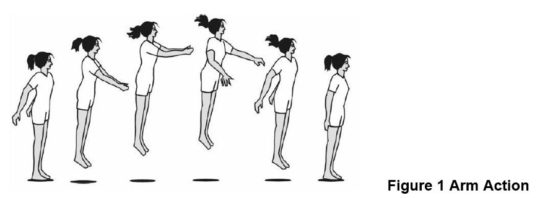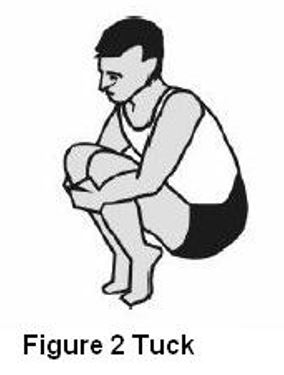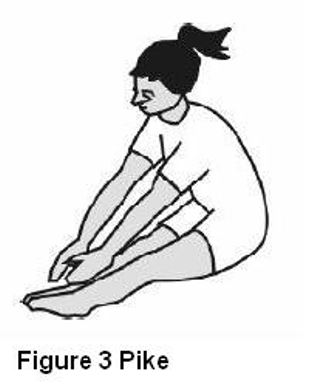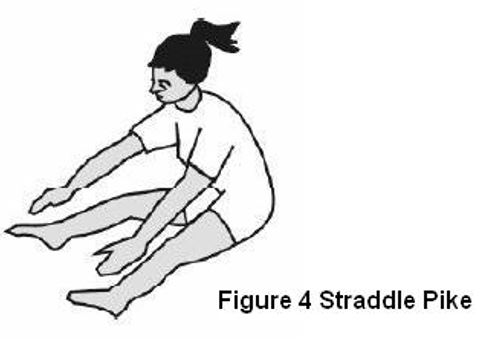Safe Use Practises
- Always bounce at the centre of the trampoline mat. Bouncing near the edge of the trampoline mat can lead to injury and can also stretch the springs. The frame pad is not designed nor intended to support the weight of the trampoline user. Do not step or jump directly onto the frame pad.
- Avoid bouncing too high. Stay low until you can control your bounce and land consistently in the middle of the trampoline mat.
- To regain control and stop your jump, bend your knees quickly when you land.
- Allow each jumper a brief turn on the trampoline. Extended bouncing exposes an over tired user to an increased risk of injury.
- Do not use the trampoline when under the influence of alcohol or drugs.
- The trampoline mat is several feet from the ground. Jumping off the trampoline to the ground or any other surface may result in injury. Jumping onto the trampoline from a roof, deck, or other object also represents a risk of injury. Smaller children may need assistance getting up on or down from the trampoline.
- Mounting and dismounting properly should be a strict rule from the very beginning. Users should climb onto the trampoline by placing their hands on the frame and stepping or rolling up onto the frame, across the springs, and onto the mat (bed).
- Do not step directly on the frame pad or grasp the frame pad when mounting or dismounting the trampoline. Users should always place their hands on the frame while mounting or dismounting. To dismount, jumpers should walk to the side of the mat (bed), bend over and place one hand on the frame, then step from the mat to the ground.
- Injury may result from hitting the frame or falling through the springs while jumping or getting on or off the trampoline. Stay in the centre of the trampoline mat when jumping. BE SURE TO KEEP THE FRAME PAD IN PLACE TO COVER THE FRAME AT ALL TIMES. Do not step or jump directly onto the frame pad as it is not designed nor intended to support the weight of the user.
Basic Trampoline Skills
The Stop Bounce
This technique allows the jumper to gain control by stopping quickly. It is achieved by keeping the feet in contact with the bed and absorbing the rebound of the trampoline with the knees and waist. This skill should be the first skill learnt and should be employed whenever you feel out of balance, or land away from the centre area.
To learn the stop bounce:
- Stand in centre of the bed with your feet about hip-width apart.
- Attempt about three easy bounces, keep them low and controlled.
- Focus your eyes towards the perimeter of the trampoline while bouncing in order to keep your balance.
- Stop the bounce by bending at your knees and hips on contact with the bed.
Arm Action
Arms are very important for proper control and lift. Whenever you go up, your arms go up. They go up to a set position about shoulder height and shoulder width. They should remain in this balanced position until you start down. Then they circle down and slightly behind the hips, ready to lift again as you bounce up (see Figure 1).

Bounce Variations
Figures 2, 3 and 4 show three variations, the tuck, the pike, and the straddle pike respectively. These should be assumed at the top of the bounce, before resuming the normal landing position on your feet.
Practice these simple variations and concentrate on perfect form. Make sure that your toes are pointed and fingers are straight.
These are simple variations to the basic bounce and are very important for gaining experience in coordinated movement.



Basic Landing Positions
General
Positions for all drops: seat, hands and knees, and front, should first be practiced on the ground, then in a stationary position, and only the on the trampoline bed.
Drops should be performed after “Priming” the trampoline bed. Priming is done by bending your knees and pushing down repeatedly on the trampoline bed, thereby setting the bed in motion. The feet stay in contact with the bed during the entire priming motion.
The Hands and Knees Drop
To do this drop properly, there should be just as much weight on your hands as on your knees. Your back should be about approximately parallel to the bed. Knees and hands should land simultaneously, with the middle of the body landing in the centre of the trampoline. Hands should be directly under the shoulders. Knees should be directly under the hips. Your toes should be pointed.
To learn the hands and knees drop:
- Get down on your hands and knees on the bed. Make sure you have weight on both your hands and your knees. Do not sit on your heels.
- Remain in this position and try to bounce. Do not rock back and forth between the hands and knees, but develop an even landing on all four points.
- From the standing position, prime the bed several times. Lift upward with your hips, reach forward with our hands, and land on all fours. Look slightly in front of your hands on landing. Push to rebound to your feet (see Figure 5).

The Front Drop
Contact with the trampoline be should simultaneously take place with your hands, elbows, chest, stomach, hips and knees. Knees should be bent.
You must come down level. If the landing is made first on your chest and arms, they will rebound before your knees hit which will result in a straining action on you back. If this type of landing is made with a traveling, diving approach there is a chance that your elbows may become skinned. If the landing is made so that your knees and hips hit first, then they will rebound and your shoulders and face will land heavily.
Step 1:
- Start from the hands and knees drop position.
- As you rebound from the hands and knees, stretch so that you land on your stomach. From this position, rebound to your hands and knees.
Step 2:
- Start from a standing position with knees bent so that your upper body is low and close to the trampoline bed.
- Prime the bed several times.
- Lift hips gently upward and backward.
- Land in contact with the bed as described in Step 1.
- Push with your hands to return to the feet
Step 3:
- Start from a straight standing position.
- Prime the bed several times.
- Perform skill as in Step 2 (see Figure 6).

Series of Drops
Sequencing
Once you have mastered the individual bounce variations and drops, practice them in sequence.
Front drop-Half twist-Front Drop (AKA: Turntable)
Step 1:
- Begin in a hands and knees position, with hands forming the apex of a triangle, like in front drop.
- Prime the bed in this position.
- Push backward with your hands and extend your body to land in the front drop position.
- Repeat several times in succession: Hands and knees drop-Front drop-Hands and knees drop-etc.
Step 2:
- Perform the movement as in Step 1. However, do it at twice the speed so as to bring your knees inward, under your hips and out again without touching your knees on the bed.
Step 3:
- Perform the movement as in Step 2. Push sideways on the trampoline bed so your body rotates.
Step 4:
From a standing position, prime the bed, then perform a front drop. Push sideways, as in Step 3, and complete a 180 degree turn, finishing in a front drop facing the opposite position (see Figure 7).
Figure 7 Front Drop—Half Twist—Front Drop

Additional Twisting
You can combine a twist with each of the basic landing positions. You can twist after the landing position.
You can add more twists. Remember to practice and perfect the smaller twists before moving on to larger twists.
You can also perform a series of twists.
Example: Swivel hips-perform several in a row, all twisting in one direction, or alternating directions.
Jumpers Role in Preventing Accidents
Education on the part of the user is a must for safety. Users must first learn a low controlled bounce and the basic landing positions and combinations before proceeding to intermediate skills. Jumpers must understand why they must master “control” before they can start thinking about other moves. Understanding the proper progression of skills in jumping on a trampoline must be the first lesson.
Supervisor’s Role in Preventing Accidents
It is the responsibility of the supervisor(s) of trampoline users to provide knowledgeable and mature supervision. They need to know and enforce all the rules and warnings set forth in this manual in order to minimise the likelihood of accidents and injuries and to inform users of these rules. When supervision is unavailable or inadequate, this may require that the trampoline be disassembled, placed in a secure area, or otherwise secured against unauthorized use. It is the responsibility of the supervisor(s) to be sure that the users are fully aware of the safety guidelines which are printed on the pads.
At Goliath Outdoor, we are passionate about child safety. We kindly ask that you follow this advice.
